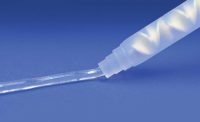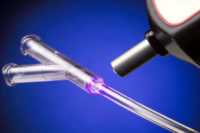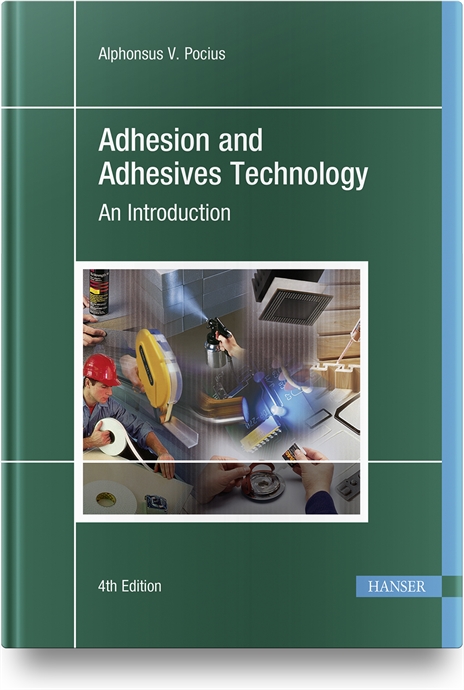Silicone Adhesives for Medical Devices

Medical device manufacturers value silicone adhesives for their ability to bond various substrates when assembling devices such as catheters, pacemakers, cochlear implants, aesthetic implants and gastric balloons. The adhesives are biocompatible, hydrophobic and versatile.
When selecting a silicone, engineers must consider many factors, including the substrates, their surface energy, available bond sites, the manufacturing process, and the end-use.
One-part, moisture-cure, room-temperature vulcanizing (RTV) silicone adhesives are the most common silicones for medical devices. Heat is not required to cure, making them ideal for temperature-sensitive components, such as electronics and thermoplastics. They are well-suited for creating a seal and for bonding silicone to other silicones, metals, some plastics and glass.
Cure rates of one-part RTVs are influenced by several factors, including humidity (20 to 60 percent recommended), temperature (25 to 50 C recommended), the thickness of the adhesive, and the surface area exposed to air. Because the adhesive cures from the outside in, with thinner sections curing more quickly than thicker ones, it needs moisture-laden airflow to cure thoroughly. “Leaving groups” (byproducts of curing, such as mild acids or alcohols) must be evacuated.
Available in both self-leveling and non-slumping formulations, these adhesives do not require premixing. They cure more slowly than two-part RTV adhesives. Due to leaving groups, the adhesive may shrink during cure—typically between 3 to 6 percent of its original volume.
Two-part RTV silicone adhesives are versatile. These adhesives typically cure much faster than one-part RTV adhesives. Because two-part RTVs do not require moisture to cure, they can meet unique assembly requirements, such as forming bonds at interfaces with little or no access to air. Two-part RTVs are ideal for temperature-sensitive components and assembly processes where a relatively low temperature must be maintained. They adhere well to various substrates and can also be used for sealing, potting or encapsulating.
Curing is initiated by mixing the components together in a 1-to-1 ratio. Curing does not depend on humidity. The cure rate is influenced by heat and is not limited by the thickness of the adhesive because it cures uniformly. Practically no byproducts are released during curing.
Two-part RTVs are available in non-slump formulations with moderate to high extrusion rates, so the adhesive is easily dispensed.
Cure rate can be accelerated by increasing temperature, and shrinkage is minimal. Work times range from 15 minutes to two hours, depending on temperature.
High-temperature vulcanizing (HTV) silicone adhesives differ from RTVs in that they are formulated specifically to cure with the application of heat. Only available in two-part formulations, HTV adhesives are ideal for bonding parts that are not heat-sensitive or when a quick cure is desired.
All the advantages of two-part RTVs apply to HTVs. They have a work time ranging from 15 minutes to greater than 24 hours, depending on the formulation.
For ease of use, both RTVs and HTVs can be supplied dispersed in a solvent to facilitate a specific process or application. The rheology of dispersed adhesives is ideal for thin sections or small intricate areas where the adhesive needs to reach a location that might otherwise be hard to access. This is especially useful for small medical devices.
Dispersed adhesives come in one- or two-part formulations. All the advantages of one- and two-part RTV and HTV adhesives apply to dispersed formulations. These adhesives easily spread out in a thin, uniform layer that conforms to the underlying shape.
These low-viscosity materials can be applied by spraying, wiping, dipping or screen printing. Work times can be extended when the adhesive is solvated. The rate of solvent evaporation can be optimized with a combination of airflow, time and heat. Cure can take place once the solvent has evaporated.
One-part or two, RTV or HTV, silicones can be customized to enhance process and performance characteristics. Adhesion properties can be tuned to specific substrates. Viscosity can be adjusted to desired flow characteristics. Fillers can be added to match color or enhance properties, such as radiopacity.
Looking for a reprint of this article?
From high-res PDFs to custom plaques, order your copy today!






